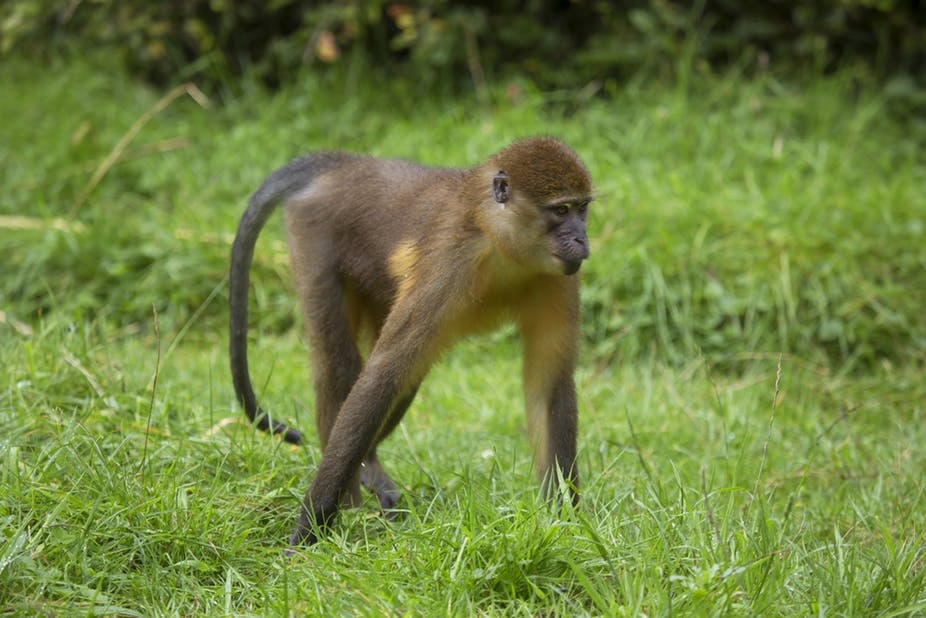In 1958, a physician and researcher in the field of virology, Preben von Magnus of Copenhagen, Denmark identified monkeypox for the first time and researched long-tailed monkeys (Macaca fascicularis).
Preben von Magnus is known as a virologist focusing on various researches on influenza, polio, and monkeypox virus. He is also known for the Von Magnus Phenomenon, which describes an event of defective interfering particles (DIPs) that are closely related to the genetic material of a virus. This phenomenon was first discovered in influenza virus propagated through embryonic chicken eggs. In 1965, his expertise in biological weapons brought him to a prestigious award called “Knight of the Order of the Dannebrog” from the Danish government.
Monkeypox is a disease caused by monkeypox virus (MPV). This virus has genetic material in the form of double chain DNA (dsDNA), which is zoonotic, and classified into the genus Orthopoxvirus and Poxviridae family. This virus can infect humans like some other members of Poxviridae family, such as variola virus (VAR), cowpox (CPX), and vaccinia(VAC). Monkeypox virus causes a disease similar to smallpox but with a lighter rash and a lower mortality rate. These viruses are mostly found in tropical rainforests in Central Africa and West Africa. In 1970, the first reported case for human was in the Democratic Republic of Congo. A scientific paper from Breman et al. in the Bulletin of the World Health Organization (Vol. 58), found variation in viral virulence in isolates found in Central Africa and were more virulent than viruses from West Africa.
The Centers for Disease Control and Prevention (CDC) in the United States released that the monkeypox virus can spread both from animals to humans and from humans to humans. Infection from animals to humans can occur through animal bites or direct contact with the body fluids of infected animals. This virus can spread from human to human through contact with various bodily fluids from infected people. Early symptoms of this disease include swollen lymph nodes (lymphadenopathy), muscle pain (myalgia), headache, fever, and the appearance of a rash. The incubation period for this disease is around 10-14 days.
Monkeypox Research in Indonesia
On May 9, the Ministry of Health (MOH) Singapore released official information on its website that there was a monkeypox virus infection in Singapore. The patient was a Nigerian national and was being treated at the National Center for Infectious Diseases (NCID), Singapore. It made Singapore government tighten supervision of anything related to the spread of monkeypox disease, including international animal trade and immigration.
Moreover, the Ministry of Health (Kemenkes) of Indonesia warns Indonesian citizens (WNI) in the area of monkeypox infection to immediately have their health examined if they have monkeypox symptoms. Fortunately, monkeypox disease has not been found yet in Indonesia according to the latest information from the Directorate General of Disease Prevention and Control (P2P) of Ministry of Health (Kemenkes) of Indonesia.
To prevent the spread of monkeypox disease to Indonesia, the Indonesian government, through relevant ministries, such as the Ministry of Agriculture and the Ministry of Health, should carry out immediate prevention before an outbreak occurs. Several zoonotic diseases included in the list of strategic infectious animal diseases in Indonesia are rabies, anthrax, avian flu, salmonellosis, and brucellosis. On the other hand, in line with the increasing globalization and free trade, there will be zoonotic biological warfare agents and bioterrorism. There are also the latest issues relating to emerging and re-emerging zoonoses. Thus it is time for all laws and regulations related to the field of zoonoses to be reviewed by the government.
According to a scientific paper written by Brown and published at Revue Scientifique Et Technique International Office of Epizootics (Vol 23), monkeypox is one of the emerging zoonoses identified in the last 20 years. There are various factors contributing to the emergence of zoonoses. They are trade globalization, destruction of wild animal habitat, growth of the human population, changes in livestock and production technology, environmental change, expansion of people in previously uninhabited areas, microbes related to wild animals, and intensification of wildlife reservation.
The occurrence of emerging zoonoses is unpredictable, and every new disease appears from an unexpected source. There will be more zoonotic diseases in the future, and preparation must be made to face the worst possibilities. The government needs to establish some essential points to strengthen the capacity and strategy of a partnership between the government and the private sector. For example, by doing more intensive integrated research between human health and animal health.
In Indonesia, there are no state-owned or private research institutions engaged in research related to monkeypox. Indonesia could be one of the potential countries to contract this disease. There are also no scientific publications related to monkeypox conducted by researchers from Indonesia, both related to the field and experimental in the laboratory. The latest report on monkeypox research in Indonesian was by Arita et al. in the Bulletin of the World Health Organization (Vol. 46) with a topic of serological surveys in primates.





